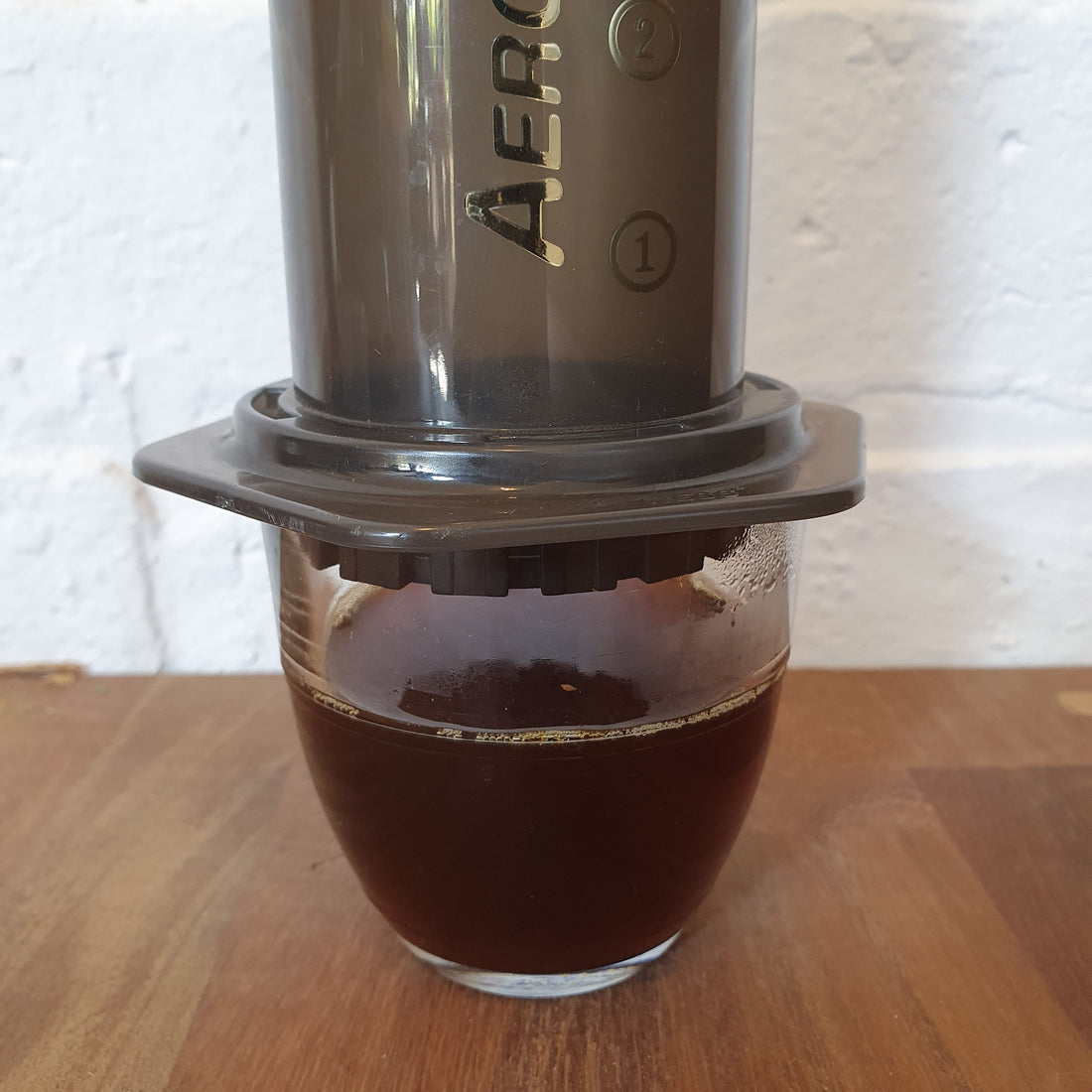By James Gallagher for Steampunk Coffee
Back when I got my Aeropress, I spent a few days finding a recipe that I liked. I stuck with that recipe for weeks because it worked and I was glad that I could make such good coffee. Then I got an itch to explore the world of coffee making further. Toward the end of last year, I started to ask myself: how can I change my Aeropress recipe? Is there a recipe that will lead to a better brew?
My experimentation was filled with surprises. I quickly realised that my old recipe, while useful, was only one way to see the Aeropress. There are plenty of other ways to make Aeropress coffee, often with absolutely delicious results. So I started to change variables and see what I could do to make a better (or at least a different) coffee with my Aeropress. I also learned what individual changes contributed to a better cup. I learned that I prefer two filters to one (although only by a small margin). I learned that I can use a coarse grind with my Aeropress, which I previously did not think was possible.
What can you change in your Aeropress brewing to alter the outcome of the cup? Let's chat about some Aeropress brewing variables you can manipulate.
Grind Size
There are two general rules when it comes to grind size: coarser coffee extracts slower and finer coffee extracts quicker. The finer you grind, the faster the flavours are going to come out of your coffee. That's why French press coffee, which uses a very coarse grind, takes about four minutes to make with most recipes. Try out a coarser grind on your Aeropress. Or go a bit finer than normal. See how those changes affect your coffee. *NB: If you have not already, I would definitely recommend trying a recipe with quite a coarse grind.**
Dose
The more coffee you put in your Aeropress, the more intense the flavours will be. I like using 15 grams of coffee when I brew coffee but that's not a hard rule. I heard someone say that they liked a lower dose and that a lower dose meant they could have more coffees. What excellent logic! I have enjoyed Aeropress brews with a lower dose. At one point I was using 12-13 grams in my coffee. Try a higher or lower dose than normal and see what you think.
Inverted vs. Regular
What's better: the inverted or regular method? In my opinion, no method is better: they each offer their own benefits. I find the regular method is a bit safer (you are less liable to make a massive spill!) but both methods produce an excellent cup of coffee when used with a good recipe. I started with a regular method but then I found that I preferred the inverted method. Now I'm back to the regular method again. The only way you'll know which one you prefer (or if you feel they are both the same) is to try both inverted and regular brewing with the Aeropress.
Time
I have used different times for my recipes. Typically I use a longer time for a really coarse grind but aside from that I usually brew between one and two minutes. So even I have to explore this point. Try brewing for one minute. Or two minutes. Or three minutes. I would recommend changing your grind setting in addition to time if you plan on brewing for much longer or shorter than usual. Otherwise, you may make a really bitter or weak coffee.
Amount of Water
Also called the brewing ratio, you can mess around with the amount of water you pour in the Aeropress. I usually pour in 250 grams but some people make concentrates where they make less than 100 grams of coffee and add water to the coffee after it has been brewed. Or you could make an espresso-style coffee by using very little water and drink your coffee straight.
Stirring
To stir or not to stir. I like stirring because I usually brew for a short period of time and stirring helps to release flavour compounds from the coffee grounds. Aeropress brewers stir in all different ways. You could stir with a new tool (a teaspoon, a chopstick, etc.) or you could change your stirs. Stir five times instead of three. Stir for 20 seconds at a particular pace. It's up to you what you try.
Filters
I like an Aeropress coffee brewed with two filters. The additional filter helps keep some sediment (little bits of coffee grounds) out of my brew and thus makes the coffee less "muddy" and a bit clearer. But I spent months brewing with one filter. There are also custom Aeropress filters made with different paper. And there are metal filters which promise to deliver a cup quality similar to that of a French press. If you have explored all the other variables and want to try something else, researching filters is a good option. Note: I saw a recipe where someone used a slice of orange as a filter!
Add Ice
For the spring and summer months, add ice to your coffee once it has been brewed to make yourself an Aeropress iced coffee. For an iced latte, add milk.
Conclusions
These are the main ways I can think of manipulating an Aeropress recipe. Knowing these variables, I am now able to improvise my brews. It has been a while since I have done this but I have on a few occasions made a coffee using a recipe I made up on the spot. I chose a grind size, a time that I thought would work, a method, and tried my best. I have made some excellent cups of coffee this way. Indeed, with some knowledge one can improvise with the Aeropress.
Ultimately, your recipe is up to you. If you are happy with your coffee right now, you may not want to explore new recipes just yet. But if you feel like you want to learn more about brewing coffee -- or if you feel you could make a better cup -- then I encourage you to experiment with the brewing variables I have mentioned above. Try stirring more or less. Try brewing for a longer or shorter period of time. Try a new method of filtration. You may discover a recipe that becomes a permanent fixture in your daily brewing.
Contributed by James Gallagher, a home brewer and coffee enthusiast. View his excellent blog at jamesg.blog

